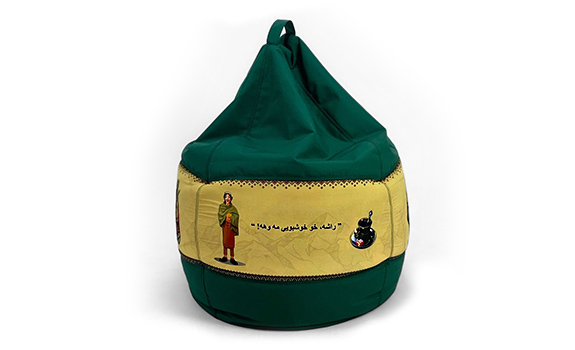The Russia Food Service Market is poised for substantial growth, fueled by evolving consumer preferences, digital innovations, and the growing popularity of food delivery platforms. According to Renub Research, the market is projected to grow from USD 26.5 billion in 2024 to approximately USD 53.38 billion by 2033, at a strong CAGR of 8.10% during 2025–2033. Key factors driving this expansion include the rising demand for diverse, high-quality cuisines, healthy and plant-based meals, and an increased focus on local and sustainable dining experiences.
Evolving Consumer Preferences Transforming the Food Service Landscape
The Russian food service industry is undergoing a rapid transformation as consumers become increasingly discerning about the food they consume. There is a noticeable shift toward healthier and organic food options, as well as plant-based and vegetarian menus, reflecting global health trends. Additionally, there is growing interest in global cuisines, with urban populations seeking unique dining experiences.
The younger demographic, particularly Millennials and Gen Z, are driving demand for modern dining experiences, fusion cuisines, and food that aligns with sustainability and wellness values. This trend is pushing restaurants and food chains to innovate their offerings and incorporate diverse menu options.
The Role of Digitalization and Food Delivery Platforms
The rise of online food delivery services and aggregator platforms has revolutionized the food service market in Russia. Companies like Yandex.Eats, Delivery Club, and other local delivery services are helping restaurants reach a broader customer base. The COVID-19 pandemic further accelerated this shift, as consumers turned to online platforms for convenience and safety.
In 2024 and beyond, cloud kitchens and ghost restaurants are expected to play a pivotal role in catering to online delivery demand while reducing operational costs. This transformation aligns with the growing consumer preference for on-demand, fast, and affordable meals.
Growing Demand for Local and Sustainable Food
Consumers in Russia are showing increased interest in locally sourced and sustainable food products. This preference stems from both health considerations and the desire to support local farmers and businesses. Restaurants and food service providers are focusing on farm-to-table concepts, organic ingredients, and transparent sourcing to build consumer trust.
Moreover, sustainability initiatives, such as eco-friendly packaging, waste reduction, and carbon footprint management, are becoming essential components of modern food service strategies in Russia.
Market Segmentation and Key Categories
The Russia food service market can be segmented based on type of service, food type, and distribution channel:
- By Type of Service: Quick Service Restaurants (QSRs), full-service restaurants, cafes, fast-casual dining, and institutional catering.
- By Food Type: Plant-based meals, meat and poultry, bakery and confectionery, seafood, and international cuisines.
- By Distribution Channel: Dine-in services, takeout, online delivery platforms, and cloud kitchens.
Quick Service Restaurants and Food Delivery on the Rise
Quick Service Restaurants (QSRs) are witnessing exponential growth, driven by affordable pricing, quick turnaround times, and menu innovation. Brands are introducing healthier options, customizable meals, and localized flavors to appeal to a wider audience.
Food delivery platforms have also become a core component of the food service ecosystem. With enhanced mobile apps, loyalty programs, and digital payment options, companies are improving the customer experience and increasing repeat orders.
Regional Insights and Urban Market Dynamics
Major urban centers like Moscow, St. Petersburg, Kazan, and Novosibirsk dominate the Russian food service market due to their large populations, higher disposable incomes, and strong cultural affinity for dining out. These cities are also early adopters of international dining trends and innovative restaurant concepts.
Smaller cities and suburban areas are expected to see growth as food delivery services expand their coverage and local entrepreneurs invest in new dining ventures.
Key Growth Drivers
- Increased demand for healthy, organic, and plant-based meals.
- Digital transformation, with online ordering and delivery apps gaining popularity.
- Expansion of international and fusion cuisines, catering to diverse taste preferences.
- Rising disposable income and urbanization, encouraging dining out and premium experiences.
- Growth of cloud kitchens and virtual brands tailored for delivery platforms.
Challenges Facing the Russia Food Service Market
Despite promising growth, the market faces some challenges:
- Economic fluctuations and inflationary pressures impacting consumer spending.
- Supply chain disruptions, particularly for imported ingredients.
- High competition among local and international brands.
- Regulatory requirements related to food safety, labeling, and quality standards.
To overcome these challenges, companies are focusing on menu localization, cost optimization, and partnerships with technology providers to streamline operations.
Competitive Landscape
The Russia food service market is home to a mix of domestic and international brands, as well as new startups and delivery-first ventures. Leading players include:
- McDonald’s Russia (now rebranded after market exit)
- Teremok
- Kroshka Kartoshka
- Papa John’s
- Domino’s Pizza
- Shokoladnitsa
- Yandex.Eats and Delivery Club (as aggregator platforms)
These companies are investing in menu innovation, digital marketing, and eco-friendly practices to stay competitive in a rapidly evolving market.
Future Outlook: A Decade of Transformation
The Russian food service market is poised for significant expansion over the next decade, driven by technological advancements, urbanization, and shifting consumer behaviors. Some of the major trends expected to shape the future include:
- Growth of plant-based and alternative protein menus.
- Personalized dining experiences supported by AI-driven menu recommendations.
- Integration of sustainability initiatives, including zero-waste kitchens and recyclable packaging.
- Expansion of global food chains and local gourmet brands in urban centers.
About Us
Renub Research is a Market Research and Consulting Company with more than 15 years of experience, especially in international Business-to-Business Research, Surveys, and Consulting. We provide a wide range of business research solutions that help companies make better business decisions. We partner with clients across all sectors and regions to identify their highest-value opportunities, address their most critical challenges, and transform their businesses.
Our wide clientele includes key players in Healthcare, Travel & Tourism, Food & Beverages, Power & Energy, Information Technology, Telecom & Internet, Chemicals, Logistics & Automotive, Consumer Goods & Retail, Building & Construction, and Agriculture.
Our core team comprises experienced professionals with graduate, postgraduate, and Ph.D. qualifications in Finance, Marketing, Human Resources, Bio-Technology, Medicine, Information Technology, Environmental Science, and more.
Media Contact:
Company Name: Renub Research
Contact Person: Rajat Gupta, Marketing Manager
Phone No: +91-120-421-9822 (IND) | +1-478-202-3244 (USA)
Email: rajat@renub.com
New Publish Report:
- United Arab Emirates (UAE) Organic Dairy Market Size and Share Analysis – Growth Trends and Forecast Report 2025-2033
- UAE Meat Snacks Market Size and Share Analysis – Growth Trends and Forecast Report 2025-2033
- United Arab Emirates (UAE) E-Commerce Market Size and Share Analysis – Growth Trends and Forecast Report 2025-2033
FAQs
1. What is the size of the Russia food service market in 2024?
The market is valued at USD 26.5 billion in 2024.
2. What is the forecasted market size by 2033?
It is projected to reach USD 53.38 billion by 2033.
3. What is the CAGR for the market during 2025–2033?
The Russia food service market will grow at a CAGR of 8.10%.
4. What are the major drivers of market growth?
Drivers include rising demand for healthy food, digital ordering platforms, and diverse cuisines.
5. Which service types dominate the market?
Quick Service Restaurants (QSRs) and full-service restaurants lead the market.
6. Which cities are major hubs for food service in Russia?
Moscow, St. Petersburg, and Kazan are among the top markets.
7. How is technology impacting the Russia food service industry?
Food delivery apps, AI-driven recommendations, and digital payments are transforming the sector.
8. Who are the key players in this market?
Leading brands include Papa John’s, Domino’s, Teremok, and Shokoladnitsa, along with delivery aggregators.
9. What challenges does the market face?
Challenges include economic fluctuations, supply chain issues, and high competition.
10. What future trends will shape the market?
Trends such as plant-based dining, sustainable packaging, and personalized food experiences will dominate.



